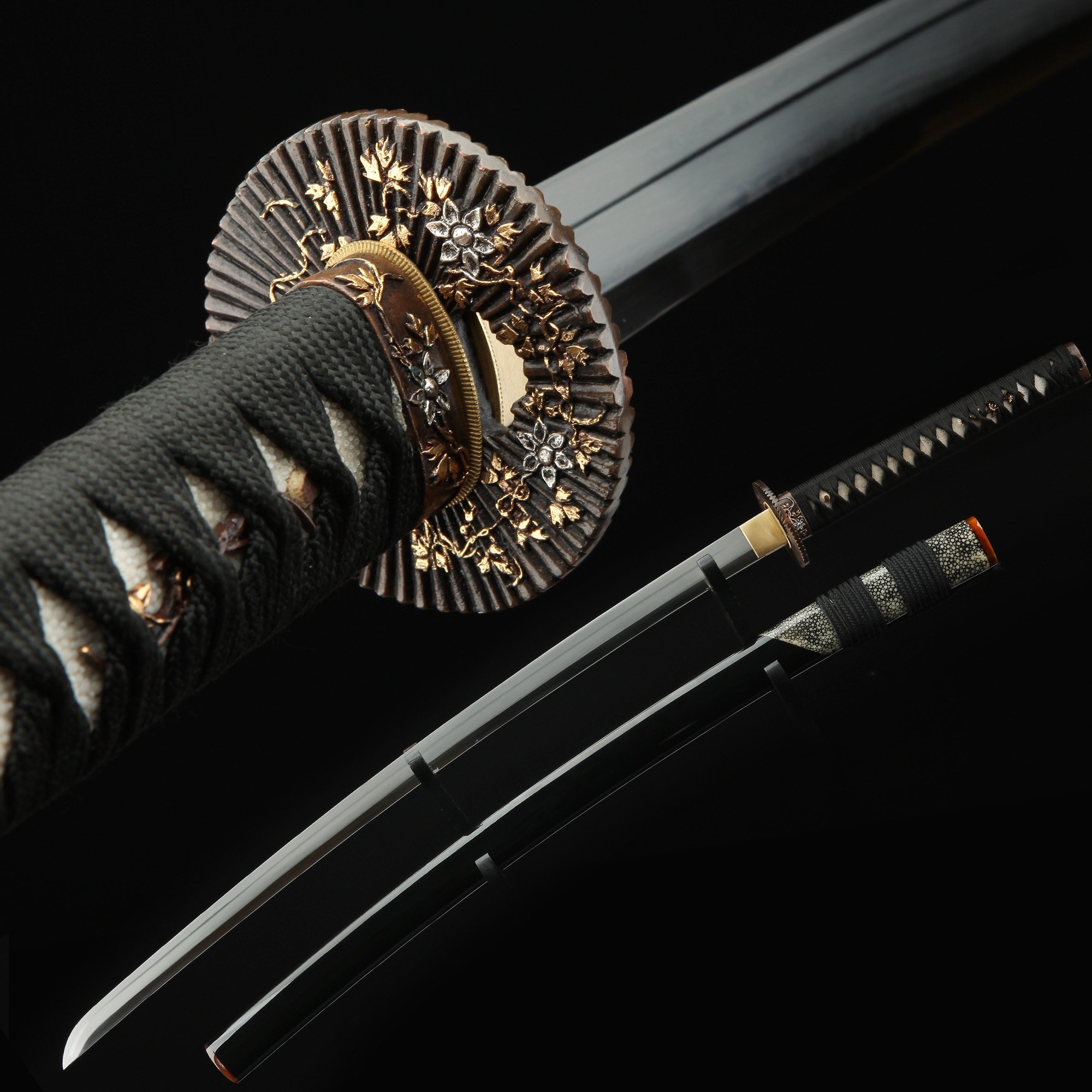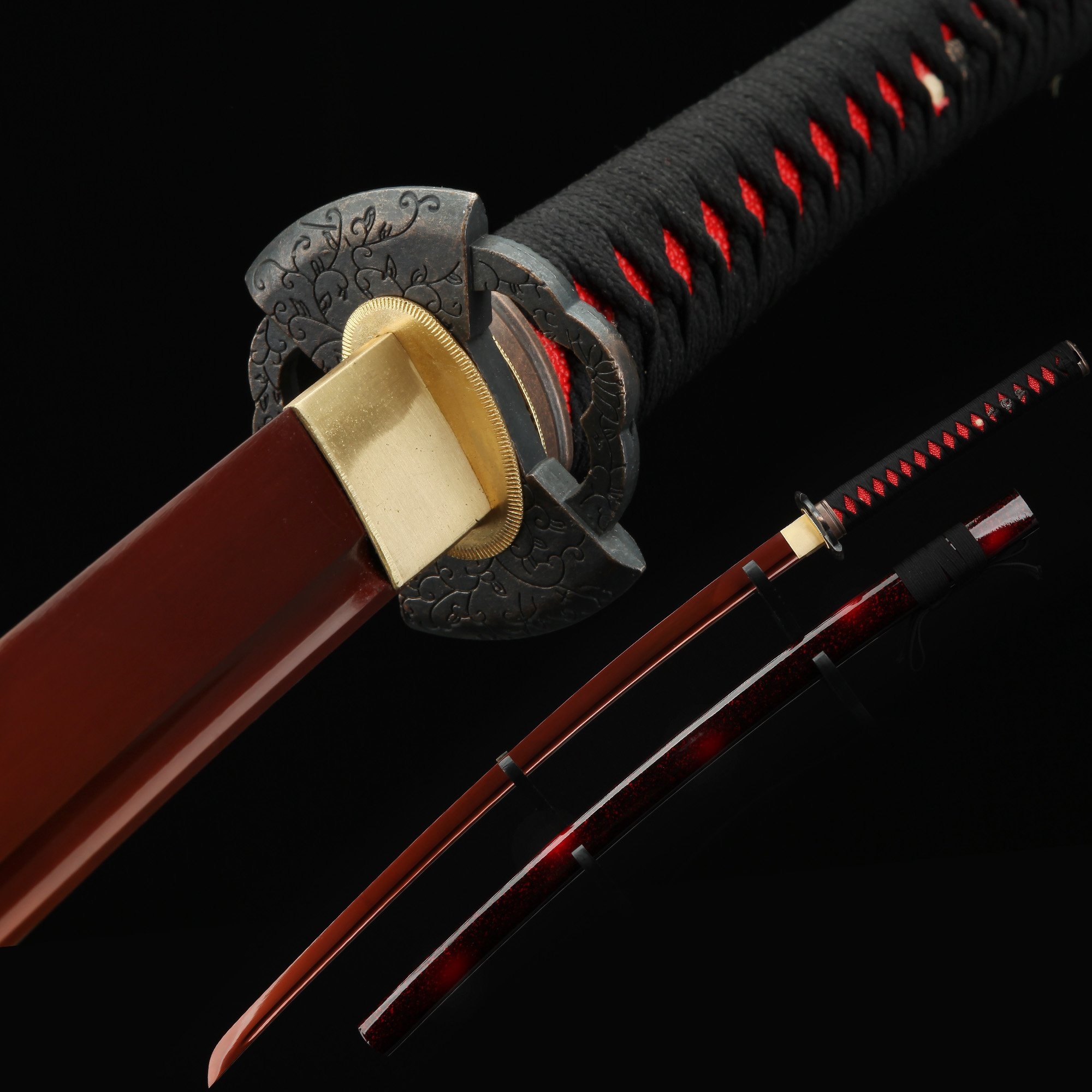

However for reasons we won’t get into here, this is not the case. A common misconception is that swords should all be “razor sharp”.

Moderately Sharp is close, but may need to be touched up to get the best performance. Possible values could be “Rebated” meaning the edge is intentionally thickened for safety, “Blunt” meaning the edge is fairly thick with little to no taper, ‘Unsharpened” which would taper to the edge but stop short of having any real cutting ability, “Slightly Sharp, Moderately Sharp, Sharp, or Very Sharp” Sharp or Very Sharp are considered good for cutting swords. The “Edge” spec will tell you about how sharp a blade is. This info is provided to give you a good idea of the product being presented, the one you receive may vary from the specific one we took measurements of. Please note: Due to the hand made nature of these items, all specs should be considered as approximates. A very high POB will result in a sword that feels heavier than it actually is and is difficult to wield. In general, a low POB results in good point control well suited to a thrusting blade, while a higher POB adds impact to a cleaving blade. A POB of 3”- 5” usually results in a well balanced sword, but does depend on the type of sword.


In practice however, there are many reasons why you may not want this for a particular sword. In theory a sword with a POB of 0” is perfectly balanced. A number of 0” would balance exactly at the guard, while a negative number will have a POB in the hilt itself. It refers to the point on the blade where the sword achieves a perfect balance. stands for Point Of Balance, this is measured in inches from the hilt down the blade. The softer spine of the blade also has a tendency to take a bend if a poor cut is made against a target, requiring it to be straightened again by a professional. While this traditional method does make a blade with a fine and hard edge the drawbacks are that this edge is more brittle than a softer through-hardened edge and make it more likely to chip or take damage when struck against a hard or dense target. In addition to this the polishing of the blade will reveal a wave-like hamon line that denotes the border between the differentially-hardened regions of the blade. This results in the blade having two separate levels of hardness the edge will be harder steel which will better hold a sharp edge and the body will be softer and have some shock-absorbing properties. The thin layer along the edge will flash cool the edge and the thicker clay on the body and spine will slow its cooling. Before quenching the blade the swordsmith will coat it with clay and the varying thickness of the clay will determine how quickly the blade will cool when quenching. In contrast to through-tempered, this is the traditional method for tempering the Japanese sword. To make our offer more complete, we also have tools imported from Japan for Nihonto Kantei, luxury maintenance sets, swordbagsand Koshirae (fuchi and kashira).What does it mean when a katana is differentially-tempered? We also have a range of Chineseand European Middle Ages Swords. We also offer training swords such as an Iaito (blunt katana) or Bokken (oak wooden training sword). In our extensive martial art range you will find mainly functional Katanas from PaulChen/Hanwei, Huanuo, Skyjiroand Fuji Forge. These are respected forges with a lot of experience in forging samurai swords. In addition to these swords, you can also buy knife or tantofrom cold steel. You can also buy a sword here with a folded and differentially hardened blade with a hamon, these are very popular among collectors. The sword was sacred to the samurai and we believe that the respect and significance of these swords can only be achieved by selling functional swords that can be used by martial arts practitioners as well as collectors with an eye for traditional craftsmanship.įor that reason you will not find cheap decorative swords in our samurai sword shop. Originated from passion, we are a unique and small-scale company that mainly focuses on functional Japanese katanas, often also known as samurai swords. We also have a small selection of Nihonto, these are authentic Japanese Swords to study or collect. The Sword Shop for Japanese Swordsmanship practitioners where you can buy a Katana, Iaitoor Bokkenwith years of experience and in-depth knowledge.


 0 kommentar(er)
0 kommentar(er)
